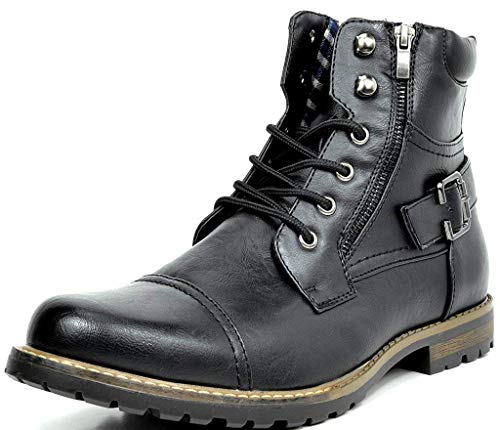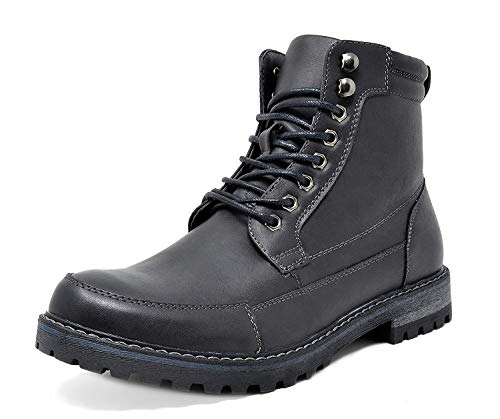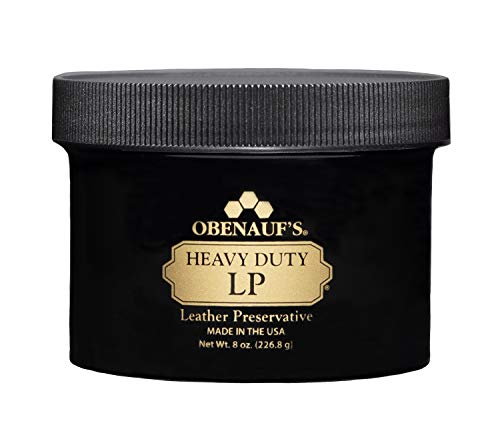
Hey there! Motorcycle boots are an essential piece of gear for any biker out there. But did you know that they aren’t always waterproof? Fear not, because we’ve got your back. In our step-by-step guide, we’ll show you how to waterproof those boots and keep your feet dry and comfortable in any weather condition. So let’s dive in and make sure you’re ready to hit the road with confidence!
Kick-start your style with these top picks!
Making Motorcycle Boots Waterproof
Gather the necessary materials
To waterproof your motorcycle boots, you will need to gather a few materials. Here’s what you’ll need:
- Waterproofing spray: Look for a spray specifically designed for leather or fabric boots. It’s important to choose a product that is suitable for your type of boot material to ensure effective waterproofing.
- Soft cloth: A clean, lint-free cloth will be useful for applying the waterproofing spray evenly. Make sure the cloth is soft to avoid scratching or damaging the surface of your boots.
- Well-ventilated area: Find a space where you can work comfortably and safely. It’s important to have good airflow while using the waterproofing spray to avoid inhaling any fumes and to allow the product to dry properly.
For example, you can gather these materials by checking your local hardware stores or outdoor gear shops. They often carry a variety of waterproofing sprays suitable for boots. Additionally, you can find soft cloths in your household or purchase them from a store. Remember to choose a well-ventilated area such as a garage with open doors or a backyard with good airflow to ensure a safe and effective waterproofing process.
Now that you have all your materials ready, let’s move on to the next step in waterproofing your motorcycle boots.
Clean the boots
To thoroughly clean the boots:
- Grab a damp cloth and use it to wipe away any dirt or debris on the surface of the boots.
- Make sure to cover all the areas, including the soles and the sides.
- Allow the boots to air dry completely before moving on to the next step. This may take a few hours, so be patient.
- Once the boots are dry, they will be ready for the next step in the cleaning process.
Prepare the boots for waterproofing
To restore the appearance of your boots, first check for any scuffs or scratches. If you find any, grab a leather conditioner or shoe polish. Apply a small amount to the affected areas and gently rub it in using a clean cloth. This optional step will help improve the overall look of your boots.
Apply the waterproofing spray
To apply the waterproofing spray, follow these steps:
- Hold the waterproofing spray about 6-8 inches away from the boots.
- Evenly coat the surface by moving the spray in a sweeping motion.
- Make sure to cover all areas, including seams and stitching.
- Allow the spray to dry completely before moving on to the next step.
Apply a second coat (optional)
To apply a second coat of waterproofing spray for added protection, simply follow these steps:
- Ensure that the first coat of waterproofing spray has fully dried.
- Holding the can 6-8 inches away from the surface, spray an even layer of the waterproofing spray.
- Allow the second coat to dry completely before exposing the item to water.
- Repeat the process if desired, applying additional coats for maximum durability against water damage.
For example, if you have waterproofed a pair of shoes, wait until the first coat is dry, then apply a second coat using the same technique. This will provide extra protection against water seeping in. Remember to allow each coat to dry thoroughly before wearing the shoes in wet conditions.
Let the boots dry
To ensure your boots are in the best condition, it’s essential to let them dry completely before wearing them. Here’s what you need to do:
- Find a well-ventilated area where you can place your boots to dry.
- Remove any excess dirt or mud from your boots using a brush or cloth.
- Leave the boots in an upright position to allow air to circulate freely. You can use a boot stand, rolled-up newspaper, or even crumpled paper towels to maintain their shape while drying.
- Be patient and give your boots enough time to dry thoroughly. Depending on the material and weather conditions, this process may take several hours or even overnight.
- Avoid wearing the boots until they are fully dry. Wearing damp boots can lead to discomfort and increase the risk of mold or unpleasant odors.
- Remember, it’s always better to wait a little longer for your boots to dry properly rather than rushing and potentially damaging them.
Example: If you’ve been out hiking and your boots are covered in thick mud, take the time to rinse them off with water before letting them dry. This will prevent any remaining dirt from drying onto the boots, making it easier to clean them later on.
Test the waterproofing
To test the waterproofing of your boots, sprinkle a small amount of water on the surface and observe how it behaves. If the water beads up and rolls off, it means the waterproofing has been successful. However, if the water is absorbed or stains the boots, it is an indication that you need to reapply the waterproofing spray. For example, you can pour a droplet of water on the boots and see if it forms round beads that don’t quickly get absorbed into the material.
Maintain the waterproofing
To extend the lifespan of the waterproofing, regularly clean and condition your motorcycle boots. Clean the boots using a soft brush or cloth to remove any dirt or debris. Then, apply a waterproofing conditioner or spray evenly over the boots, paying extra attention to the seams and areas prone to water exposure. Allow the boots to dry naturally before storing them in a cool, dry place. By following these simple steps, you can ensure your boots remain in optimal condition and maintain their water-repellent properties for longer.
Store the boots properly
- Store your motorcycle boots in a cool, dry place away from direct sunlight.
- This will help prevent any damage and preserve their waterproofing capabilities.
- Make sure the place you choose is free from moisture to avoid mold or mildew.
- Avoid storing them near any heat source or in a highly humid area.
- If your boots are wet, allow them to air dry completely before storing them.
- Consider using boot trees or stuffing them with newspaper to maintain their shape.
- Keep them away from any sharp objects or chemicals that could potentially damage the leather.
- Regularly clean and condition your boots before storing them to keep them in good condition.
- Follow these simple steps to ensure that your motorcycle boots last longer and stay in great condition for your next ride.
Repeat the waterproofing process as needed
If you notice that water is no longer beading up on the surface of your boots, simply follow these steps to reapply the waterproofing spray:
- Clean your boots thoroughly to remove any dirt or debris.
- Shake the waterproofing spray well to ensure it is mixed properly.
- Hold the can about 6 inches away from your boots and spray an even coat over the entire surface.
- Allow the spray to dry completely before wearing your boots again.
By repeating the waterproofing process as needed, you’ll keep your boots protected and ready to tackle any wet conditions.
Protecting Your Feet From Wetness
In conclusion, we have explored the essential steps to effectively waterproof motorcycle boots. We have learned that preparation is key, and ensuring the boots are clean and dry before applying a waterproofing agent is crucial. Applying a specialized waterproofing product such as wax or spray can significantly enhance the boots’ water resistance. Regular maintenance and reapplication of the waterproofing agent will ensure their long-lasting protection against moisture. By following these steps, we can enjoy dry and comfortable rides, even in the wettest of conditions. So let’s gear up, stay dry, and keep riding!
Essential Gear
Keep Your Feet Dry
Putting on and caring for your motorcycle boots
- Wear proper socks: Before putting on your motorcycle boots, make sure you wear a pair of long, thick socks to provide comfort and prevent any friction or blisters
- Adjust the fit: Most motorcycle boots come with adjustable straps or laces. Make sure to adjust them to a snug but comfortable fit. This will help to provide stability and prevent your feet from moving inside the boots while riding
- Familiarize with the gear shift lever: Motorcycle boots usually have reinforced toe areas to protect your feet. Take some time to get familiar with the position of the gear shift lever and practice shifting gears to ensure smooth and effortless gear changes
- Maintain flexibility: Motorcycle boots can provide excellent ankle support, but it’s important to ensure they still allow you to move your ankles freely for proper control. Make sure the boots you choose don’t restrict your natural ankle movement
- Regularly clean and care for your boots: To ensure the longevity of your motorcycle boots, clean them regularly and follow any specific care instructions provided by the manufacturer. Regular maintenance will help preserve their appearance and functionality
- Remember, wearing the right gear, including motorcycle boots, is essential for your safety and comfort while riding. Enjoy your rides and stay safe!
All your questions about motorcycle boots, answered!
Are there any specific certifications or safety standards that riders should look for in motorcycle boots?
Yes, there are specific certifications and safety standards that riders should look for in motorcycle boots to ensure their protection and enhance their overall riding experience. Some of the key certifications and safety features to consider are:
- CE Certification: Look for boots that have been certified to meet the CE (Conformité Européene) standard. This certification signifies compliance with European safety standards and guarantees certain levels of protection.
- Impact Protection: Check if the boots have reinforced toe boxes and ankle support, as these features provide essential protection in the event of a crash or impact.
- Abrasion Resistance: Look for boots made from high-quality materials such as leather or advanced synthetic materials that provide excellent abrasion resistance. This helps protect your feet from road rash and injuries in case of a slide.
- Reinforced Soles: A sturdy and stiff sole with reinforced padding can help prevent your foot from twisting or bending unnaturally during an accident and provide stability while riding.
- Waterproofing: Depending on your riding conditions, consider boots with waterproof membranes or coatings that will keep your feet dry and comfortable in wet weather.
- Reflective Elements: Boots with reflective patches or inserts enhance visibility, especially during low light conditions.


















I followed this guide to waterproof my motorcycle boots and it worked perfectly! I used the recommended waterproofing spray and followed each step carefully. After the boots dried, I tested them in the rain and my feet stayed completely dry. This guide is definitely effective.
I’ve tried a few different brands of waterproofing sprays and found that some work better than others. Has anyone else had a similar experience? I’d love to hear your recommendations.
I’ve found that different brands of waterproofing sprays can vary in effectiveness. Some popular options that have worked well for many people include Nikwax Fabric and Leather Proof, Scotchgard Heavy Duty Water Shield, and Kiwi Camp Dry. Feel free to share your experiences with specific brands as well.
I’ve found that applying a thin layer of silicone spray before using the waterproofing spray helps to enhance the water repellency of the boots. It’s a small extra step but definitely worth it!
That’s a great tip! Silicone spray can indeed provide an additional layer of water repellency. Thanks for sharing your experience.
I used this guide to waterproof my boots before a long trip, and I’m so glad I did. It rained heavily during the ride, but my feet stayed completely dry. Waterproofing your boots is definitely worth it!
That’s fantastic to hear! It’s always great when waterproofing efforts pay off during real-life situations. Thanks for sharing your success story.
I’ve found that using a waterproofing conditioner specifically designed for motorcycle boots has worked really well for me. It not only adds a waterproof barrier but also helps to nourish the leather and keep it in good condition.
That’s a fantastic suggestion! Using a waterproofing conditioner can provide dual benefits of protection and leather care. Thanks for sharing your tip.
I’m a bit confused about the process of preparing the boots for waterproofing. Can someone explain it in more detail? Thanks!
Of course! To prepare the boots for waterproofing, you should start by cleaning them thoroughly. Use a soft brush or cloth to remove any dirt or debris. If there are any stains, you can use a mild soap and water solution to gently clean the boots. Once cleaned, make sure the boots are completely dry before proceeding with the waterproofing steps.
I live in a very wet climate, so I decided to add an extra step to the process. After applying the waterproofing spray, I also applied a layer of beeswax to provide an extra barrier against water. It has worked really well for me so far!
That’s a great addition to the process! Beeswax can definitely provide additional waterproofing. Thanks for sharing your variation.
Any tips for maintaining the waterproofing over time? I want to make sure my boots stay protected for as long as possible.
To maintain the waterproofing of your boots, it’s important to regularly clean them and remove any dirt or grime. If you notice any areas where the waterproofing is wearing off, you can reapply the waterproofing spray. Additionally, it’s a good idea to avoid exposing the boots to extreme heat or direct sunlight for prolonged periods, as it can deteriorate the waterproofing. Proper maintenance will help ensure the longevity of the waterproofing.